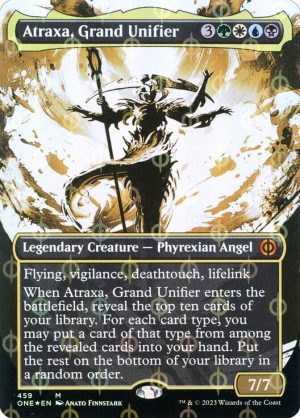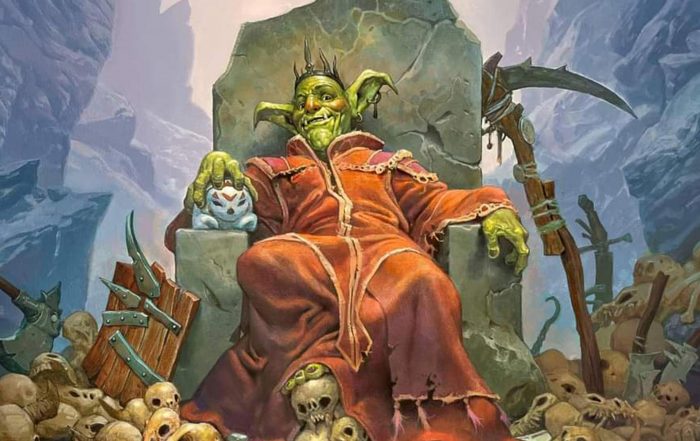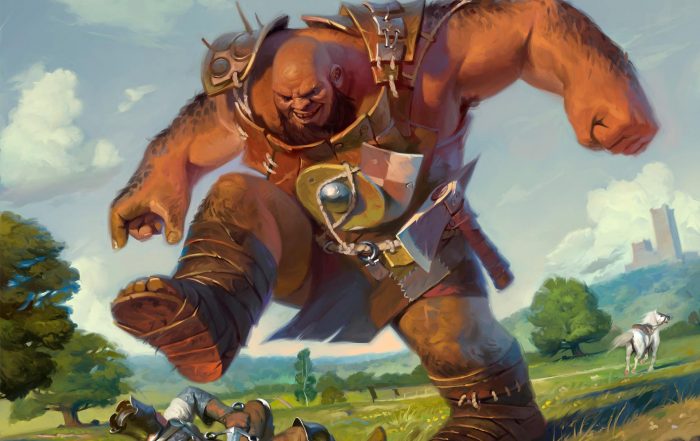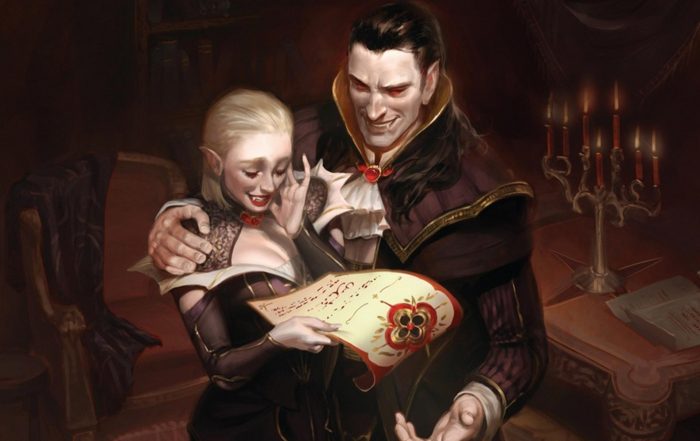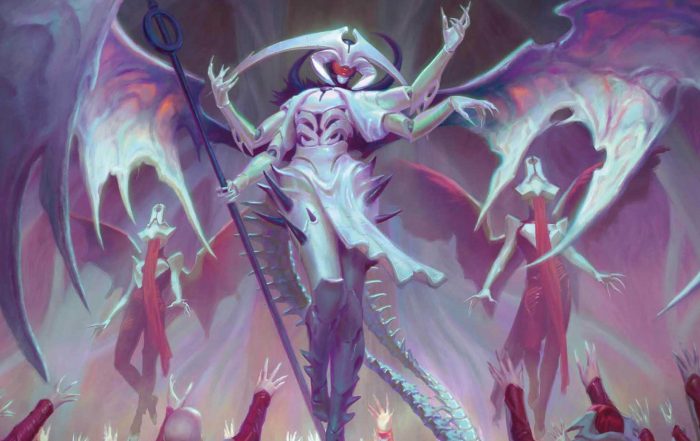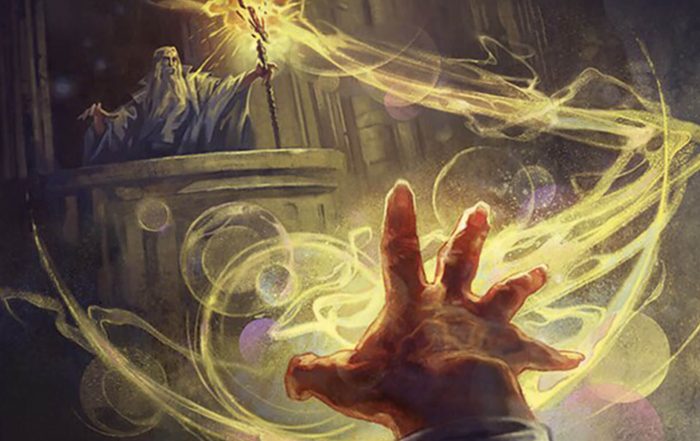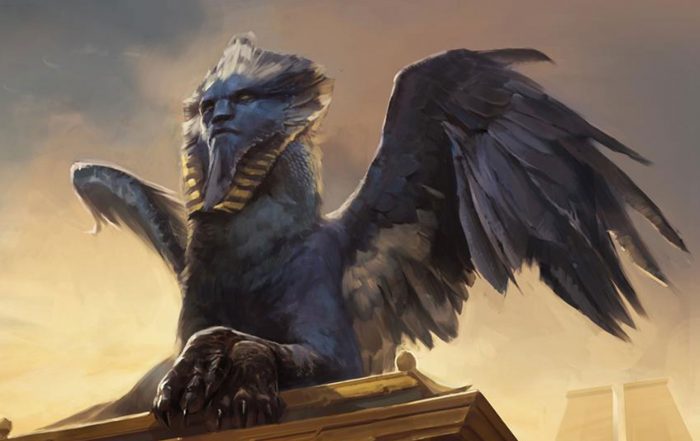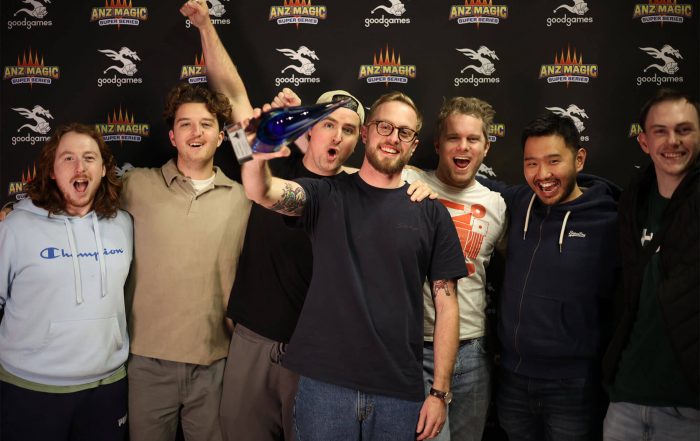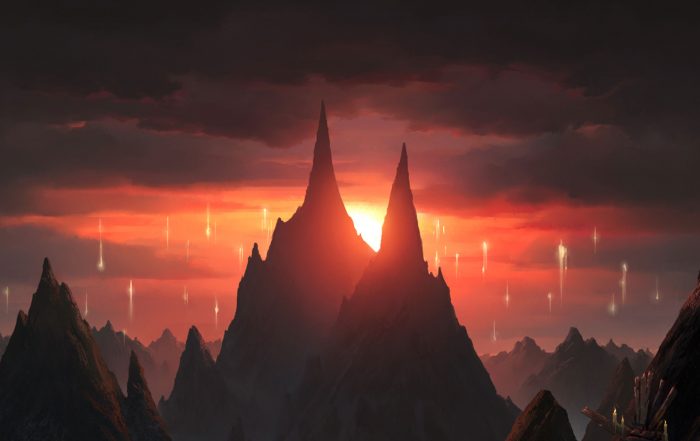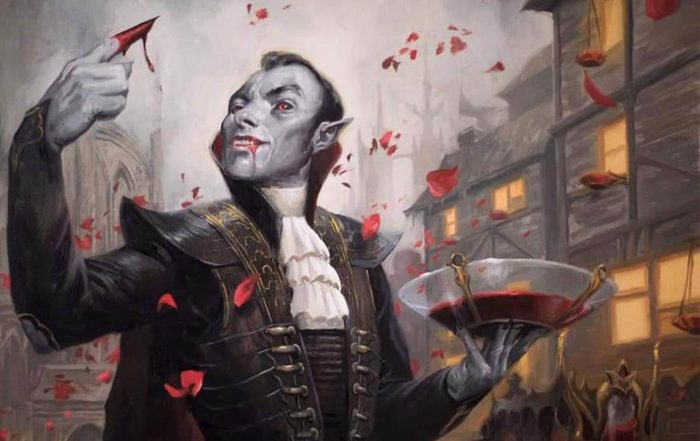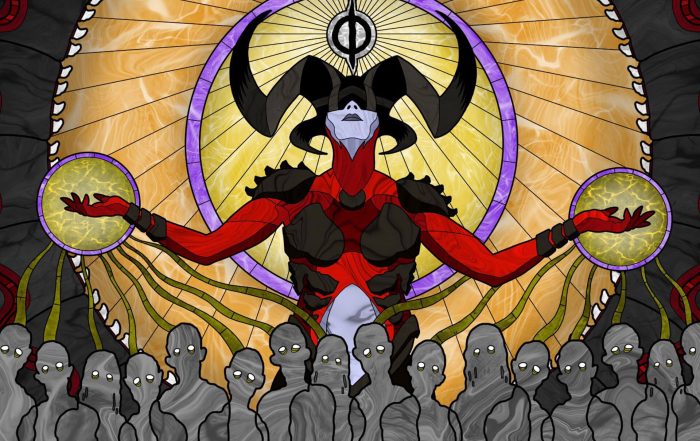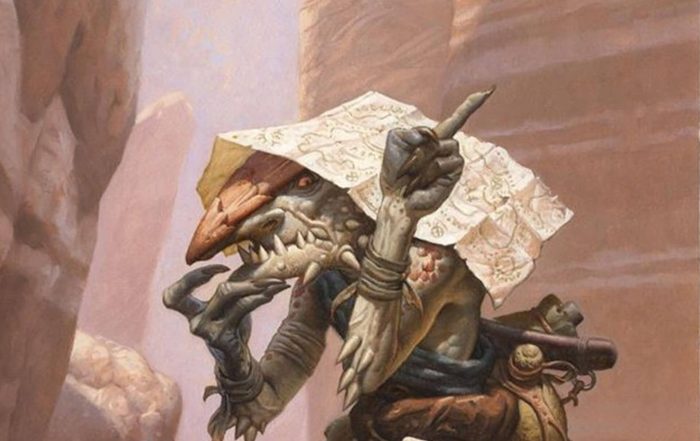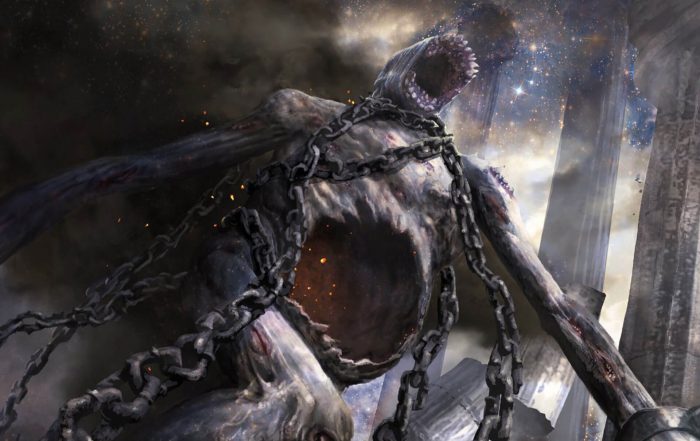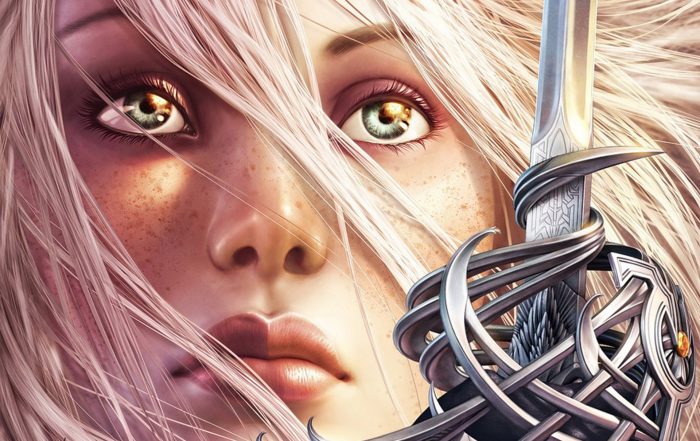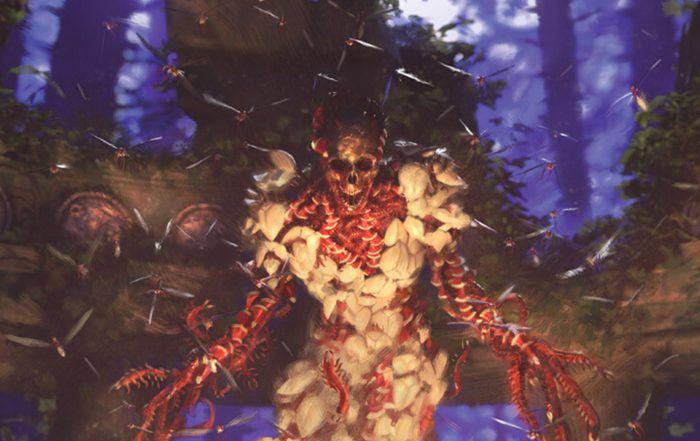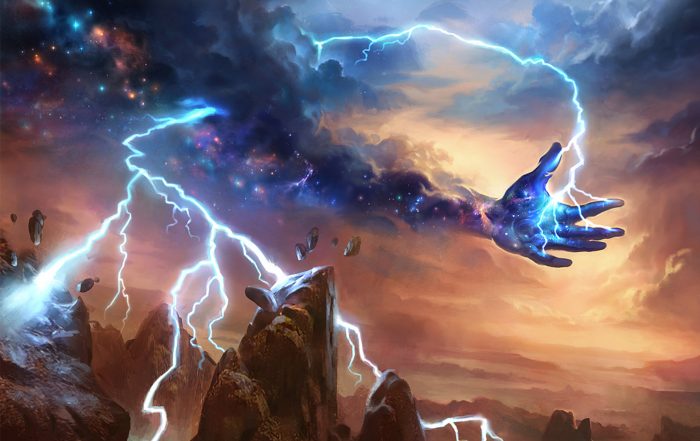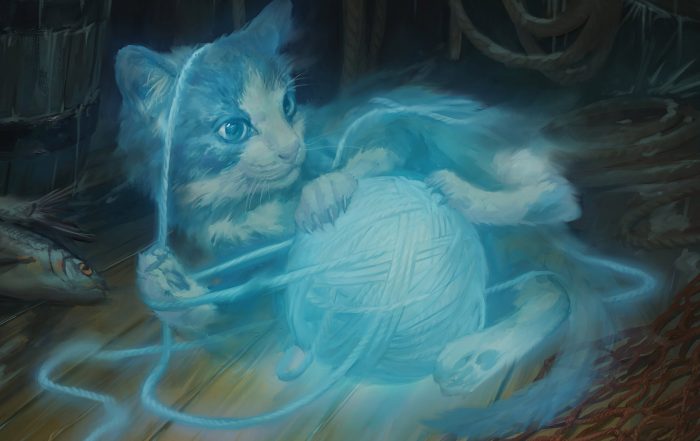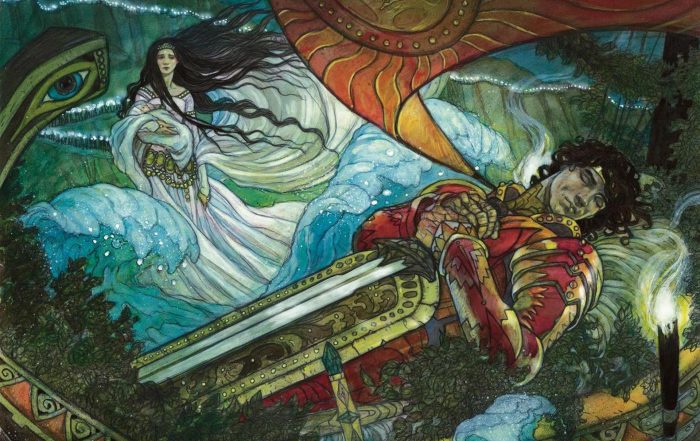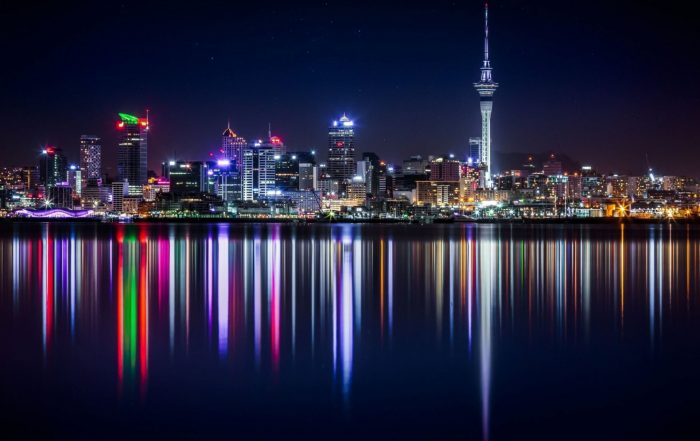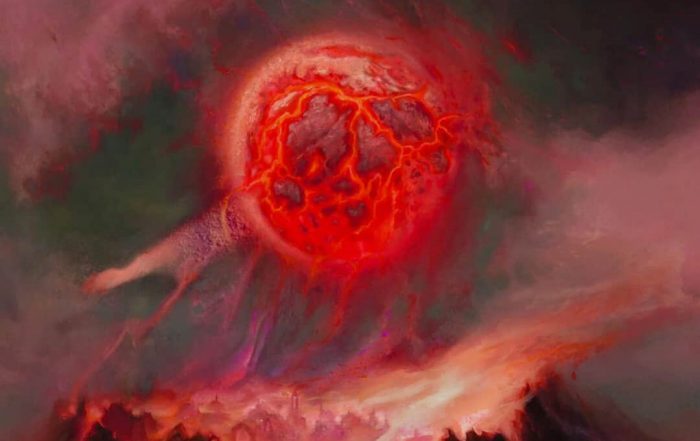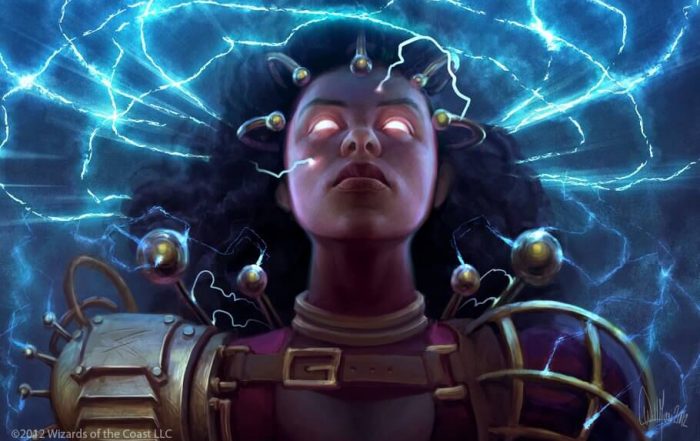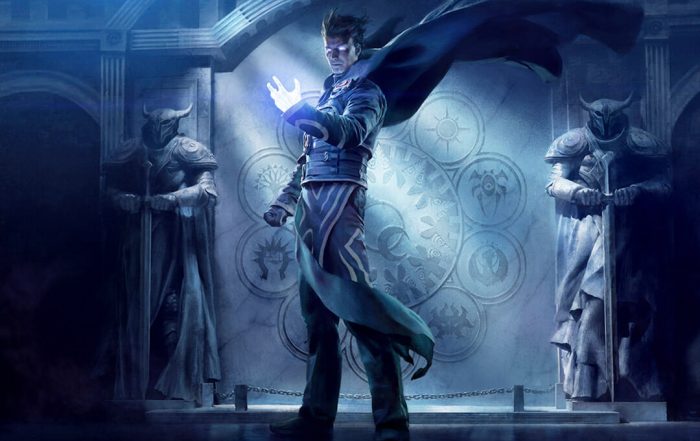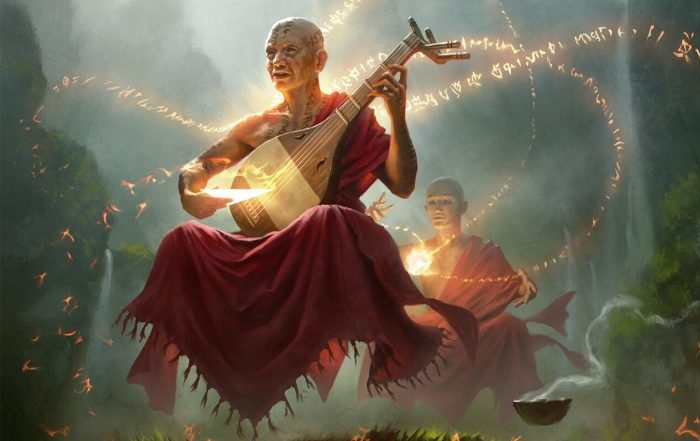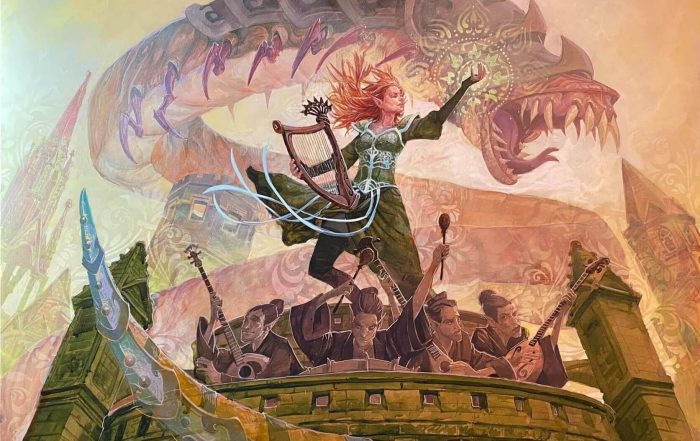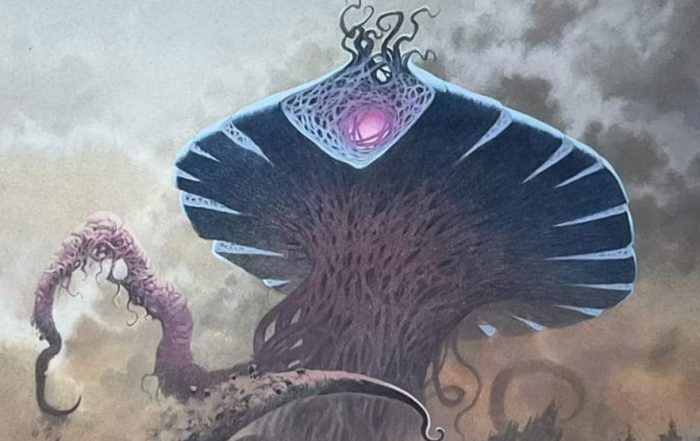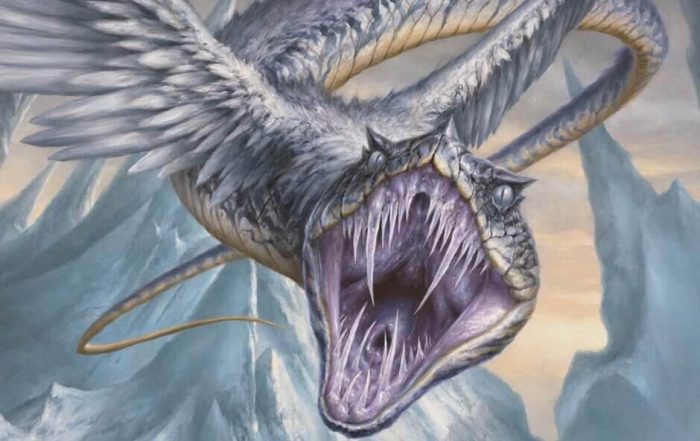Australasian Regional Championship Report
Report of the Regional Champion
The Road To Winning a Regional Championship
Author: Zen Takahash
Hello everybody!
It’s been a while since my last article, and that’s because I had been busy preparing for the Australasian Regional Championships, which took place on the first weekend of March. One of my new year resolutions was to get back onto the Pro Tour. I felt that the nature of the current standard format meant that this Regional Championships was the best chance this year to make that goal a reality. Ultimately, I ended up surpassing that goal, as I took down the whole tournament, qualifying for both the Pro Tour and the World Championships – a dream come true.
To celebrate my return to the Pro Tour, I decided to write an old-school tournament report – the type I used to read when I was in high school and dreaming about one day competing at this level.
Looking For Group
For the first Regional Championships in November last year, we put together a team of about ten players across Australia and New Zealand whom we all felt were some of the best players in our region. We ended up having a fairly successful tournament, with David Mines coming in second place to just miss out on the Worlds invite, while Michael Russell finished ninth to clinch his first Pro Tour invite.
For this Regional Championships, we wanted to keep that momentum with the team and stick with the same crew. However, about half the team couldn’t make it due to various personal reasons. This led us to adding a few more local players, but more significantly, I decided to tweet out asking if anyone from other regions was interested in collaborating together.
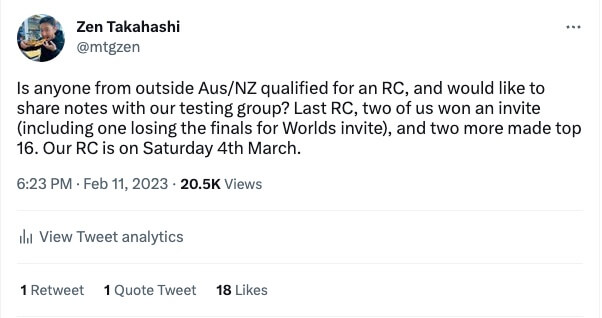
Fortunately, we had a bunch of responses from people around the world. I decided to send a link to anyone who asked for it, and we ended up with a solid group of about twenty people – including some high-profile players such as Nick Price (Philippines), Dom Harvey (Canada), Raul Venturi (Italy) and Jae Seok Cho (South Korea).
Preparation Is Everything
Once the new year rolled around, I decided to start playing some standard on Magic Online, with the hope that I could find a deck I liked before Phyrexia: All Will be One was released and that the new set wouldn’t change the format too much.
The first decks I tried were Azorius Soldiers and Izzet Ramp, but I quickly dismissed both of them. The former felt too weak against sweepers such as Brotherhood’s End, while the latter struggled against the aggressive creature decks and wasn’t even that favored against the midrange decks if they had Counterspells.
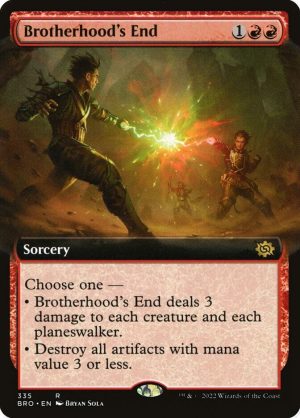
Next, I tried Mono Red Aggro, Grixis Midrange and Rakdos Midrange. I really liked the Mono Red deck, and I spent a lot of time working on it. My list was a lot more midrange than the stock version, with Fable of the Mirror-Breaker and Chandra, Dressed to Kill. I liked the deck because it had the ability to play aggressively off the back of Monastery Swiftspear and Kumano Faces Kakkazan, while also having a strong control plan (Reflection of Kiki-Jiki plus Bloodthirsty Adversary is a powerful combo).
Ultimately, though, I gave up on the deck, as I couldn’t get it to reliably beat Esper Legends and Rakdos Midrange.
This basically then left me with the Rakdos-based midrange decks. Of the two, I preferred straight Rakdos, as while I felt slightly behind in the pseudo-mirror without the Counterspells, I liked how much cleaner the mana was compared to Grixis. Against the creature decks, the smooth manabase meant you could reliably cast Cut Down on turn one and support Brotherhood’s End.
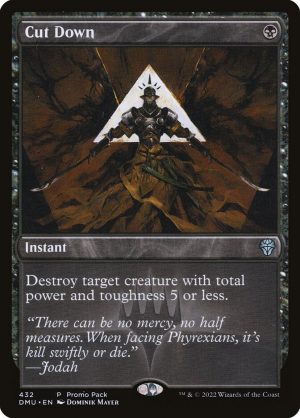
However, this preference changed once Phyrexia: All Will be One was released. The printing of the “fastlands” (Blackcleave Cliffs and Darkslick Shores) meant that Grixis could now support an extremely smooth manabase that could reliably cast Cut Down on turn one, Make Disappear on turn two, Brotherhood’s End on turn three and Invoke Despair on turn five, so there was no longer a reason not to play blue. It was at this point I decided to lock in Grixis Midrange for the Regional Championships.
The Deck

Once Phyrexia: All Will be One was released, I switched my testing from Magic Online to in-person. Each week, I met up with my Auckland friends (William Li, Calum Gittins and Ivan Sanchez) and we would jam matchup-sets all evening. William and Calum are long-time teammates, while Ivan was someone that all of us had only recently met. Our close friend Slava decided not to come to the event, and Ivan was looking for a place to stay, so we offered him Slava’s place in the Airbnb. Since we were all staying together, it made sense for us to test together too.
Ivan had only recently moved from Chile to New Zealand, but he had been tearing up the RCQ scene here in Auckland since then.
Once we started testing with him, it became clear why – he was a seriously good player. He was locked on playing Mono White Midrange for the Regional Championships, and he was highly knowledgeable and competent with the deck.
This benefitted us greatly, as the matchup was complicated to play from the Grixis side, and having such an adept testing partner helped us really learn how to play the matchup. By the end of it, although the common wisdom was that Mono White was an unfavorable matchup for Grixis, with our approach, I felt about even. This was a huge credit to Ivan for willing to spend all those hours just testing against Grixis, and I am really grateful for that.
Most of our online collaborators were interested in playing Grixis too, which meant we had a lot of players working on the deck. On Wednesday, a few days before the Regional Championships, we had a team video call where we spent three hours discussing the decklist, the sideboard and how to approach each matchup. I will cover this in detail in my next article, but ultimately, the following was what I submitted (most of the team submitted either exactly the same decklist or only changed a few cards).
Friday – Day Zero
In the morning, I submitted my decklist on MTG Melee. My flight was in the afternoon, and I was arriving in Melbourne at 6pm – just one hour before decklists were due. Therefore, to be safe, I submitted my list before I left. At the airport, there was a long line at customs, and so Calum and I talked through our decklist.
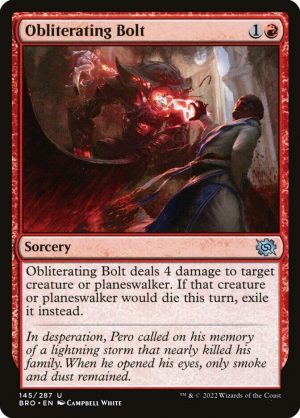
I felt good about our deck, especially as I felt well-prepared for the mirror and Mono White Midrange, but my biggest concern was that the deck was weak to specifically Ao, the Dawn Sky.
We had previously played a pair of Blue Sun’s Twilight, but after cutting them, the only removal we had to effectively deal with the legendary creature was a single Soul Transfer – a card I somewhat disliked and played mostly as a concession to annoying threats, and I definitely did not want to play another copy of.
This was when Calum suggested we play an Obliterating Bolt. Not only does it deal with Ao, but costing two mana meant that it could also deal with Raffine, Scheming Seer and Squee, Dubious Monarch reliably – two other creatures that we were worried about.
We quickly made the decision to swap the fourth Go for the Throat in our sideboard for an Obliterating Bolt, and I messaged Anthony Lee to buy some for us from the on-site vendors as I had left mine at home. Little did I know at the time how significant that decision would later be!
Once we arrived in Melbourne, we dropped our bags off at our Airbnb, then headed straight out for dinner at an all-you-can-eat Japanese restaurant. One of the best parts about travelling to Magic tournaments is the time you spend with friends, and we had a great time as we exchanged stories and shared our excitement for what was coming the next day.

Funnily enough, I was responsible for ordering the food, and I misunderstood how they were delivering the food out, so I kept thinking we had under-ordered and so started ramping up the amount. In the end, we had way too much food, and all of us were forcefully shoving it down in an attempt to not walk away with a table full of untouched food.
Saturday – Day One
Jet lag is often an issue when travelling for a Magic tournament, but when playing tournaments in Australia, the time difference actually advantages the Kiwis. Australia is two hours behind us, which means that the time you have to wake up for the tournament (7am) is 9am back home. I woke up feeling refreshed, like I had gotten to sleep-in! A nice thirty-minute walk to the venue, followed by a quick players’ meeting, and we were ready to go! The tournament was 132 players, which meant eight rounds of Swiss on Day One, followed by Top 8 on Day Two. To get the Pro Tour invite, I would need to finish in the Top 12.
Round 1 – Rakdos Sacrifice
As these Regional Championships are open decklist events, I got to review my opponent’s deck prior to the match. Upon going through their list , I genuinely did not know about half of my opponent’s cards, and he kindly pulled the cards out from his deck so I could read them. I can’t say I fully understand his deck even now, but the key cards were Oni-Cult Anvil and Ob Nixilis, the Adversary.
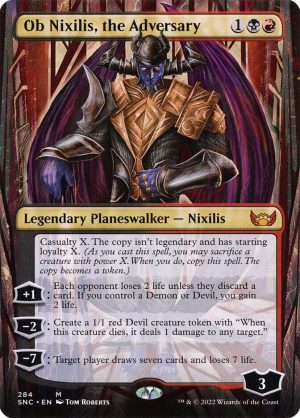
Game one started very well for him, and I felt like I was quickly falling behind as he built up a strong board presence with a number of synergistic pieces. It was apparent from about turn three that these games were going to be extremely grindy and long, so being mindful of time, I was ready to scoop at about fifteen minutes into the game when I topdecked Sheoldred, the Apocalypse.
His deck was extremely light on removal, and so I reasoned that resolving the powerful legend would give me a good chance to eventually win, and decided to continue playing. From there, we had an extremely back-and-forth game, and in the end he won on one life and game one had taken thirty-six minutes, leaving us with just under fifteen minutes left in the round.
In game two, I had a solid start, but he was also able to set up Oni-Cult Anvil and kept producing chump blockers to slow down the game. I was really worried that if I didn’t win soon, I was going to lose the match 0-1. Thankfully, I played really quickly and my opponent didn’t try to stall (honestly, he easily could have gotten away with it if he wanted to), and I took down the second game in extra turns after time was called.
After the match, I was quite rattled. I knew that the round timer was going to be a big issue in this tournament due to the grindy nature of the format, so it was extremely concerning to get a draw by the skin of my teeth in a match where I felt both of us had played at a reasonable pace. Having a draw so early also meant that I was now going to be playing against other players with a draw, so they may be either playing slow decks and/or be slow players.

Round 2 – Azorius Soldiers
Both tables next to me were Mono White Midrange mirrors, so I was expecting the worst as I exchanged decklists with my opponent. Thankfully, he was on Azorius Soldiers, a deck that is not slow and a great matchup for our version of Grixis with three Sheoldreds. I took down both games fairly quickly, which helped to restore a bit of confidence after the first round.
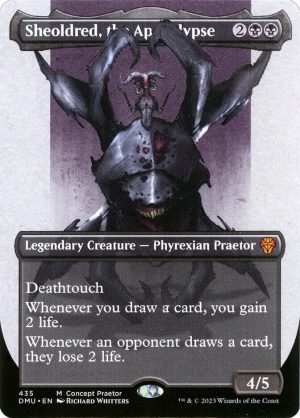
Round 3 – Grixis Midrange
I was paired against a fellow Kiwi and friend, Oscar Gray, who was on Mogged’s version of Grixis with Planeswalkers such as Kaito Shizuki and Saheeli, Filigree Master in the sideboard. I felt confident, as I believed our list lined up well against this version of the mirror.
I don’t really remember our games in detail, but I recall game one was fairly back-and-forth until I topdecked my way out of it before he did. Game two was fairly one-sided, showing the strength of Razorlash Transmogrant in the mirror.
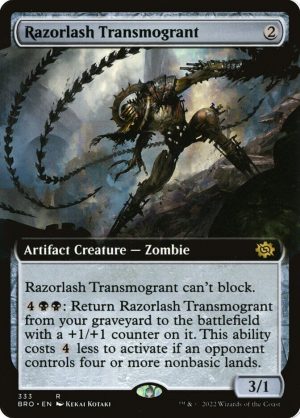
Round 4 – Grixis Midrange
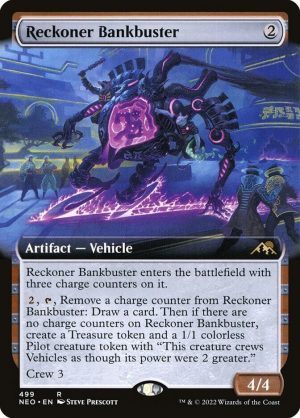
Another mirror match, and I lost the die roll, which meant I was immediately on the back foot. In the first game, my opponent was quite far ahead with double Reckoner Bankbuster (one on three counters and one on zero counters). On a fairly crucial turn, instead of opting to draw from the Bankbuster with counters on it, he chose to crew both of them and attack. I double-blocked and killed the Bankbuster with the counters on it, and then topdecked an Invoke Despair to deal with some of his permanents. At this point, I was still behind on board, but a series of good draws from my end managed to pave a path to victory as I won what felt like an unwinnable game on two life.
Game two and game three played out exactly how mirror goes when the starting player has a great hand, as he curved me out in game two while I did the same in game three.
Round 5 – Grixis Midrange
I was paired against my teammate and friend, Chris Miller, who was playing the same list. Chris has been on an absolute tear recently, as he had Top 8’d the previous Regional Championships and gone to Pro Tour Philadelphia, and was now 4-0 here.
Both games were very one-sided, as I had mana troubles. In the first game, I was stuck on four lands with triple Invoke Despair in hand, while in game two I never drew a blue source.
Round 6 – Grixis Reanimator
I had not played against an Atraxa, Grand Unifier deck ever (both in testing and in this tournament), so I was somewhat scared going into the match. However, I figured if I just countered the key cards, I should be okay.
In the first game, we traded resources aggressively and my opponent was left passing the turn with two cards in hand. This made me think he had a pair of Atraxas in hand that he could not cast. At some point, he topdecked The Cruelty of Gix, but chose to start it on the first chapter.
This ended up costing him the game, as it meant there was enough time for my Fable of the Mirror-Breaker to flip and for me to untap with Reflection of Kiki-Jiki and Corpse Appraiser just before he hit the third chapter, so I could exile whichever creature he tried to reanimate.

Game two showed the power of Razorlash Transmogrant, as I played a turn three Fable of the Mirror-Breaker, then discarded both Transmogrants to the Fable the following turn. For the rest of the game, I had two Counterspells up, while beating my opponent down with a pair of 4/2 creatures.
Round 7 – Azorius Control with Atraxa, Grand Unifier
This round, I was paired against Matt Anderson – a great Sydney player who Top 16’d Pro Tour Kaladesh a few years ago. I knew that he would almost certainly be playing some kind of control deck, and when we swapped decklists, my heart sank. He was essentially playing Mono White Midrange splashing Atraxa, Grand Unifier, Memory Deluge and six counterspells. I couldn’t think of a worse matchup for my deck.
Game one was pretty crazy, as we traded resources aggressively, but he started to get ahead on cards with Memory Deluge. Thankfully, I drew three Invoke Despairs and had enough mana to play around Make Disappear.
Chipping in damage here and there, I managed to get him to one life, but he had firmly stabilized with The Eternal Wanderer in play and was making Samurai tokens every turn while having a full-stocked hand thanks to Atraxa.
At this point, I believed I only had two outs left in my deck – either the fourth Invoke Despair or the second Sheoldred, the Apocalypse.
On the final turn before dying to the Samurai tokens, I topdecked the fourth Invoke Despair, slammed it down, and luckily he didn’t have a Negate (I had four extra mana, so I could pay for a pair of Make Disappears). It turned out Sheoldred would not have been enough, as he had his single copy of Vanish into Eternity in hand.
Game two, I got overwhelmed pretty quickly. As game one took so long, I was mindful of time, especially as I had to win both my final rounds to have a shot at the Pro Tour invite, so I conceded early, and headed into the third game with about fifteen minutes left on the clock. I don’t remember the final game entirely, but I recall Matt mulliganed and had a somewhat awkward hand, and I was able to get ahead both on board and in cards thanks to Reckoner Bankbuster and Fable of the Mirror-Breaker.
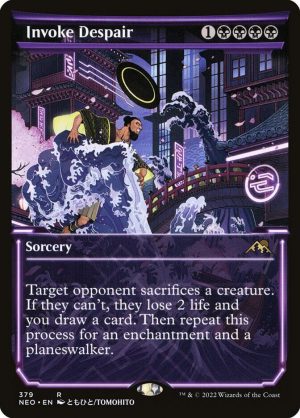
Round 8 – Grixis Midrange


After looking at the standings before the final round, the math was pretty clear – if I won my match, I was definitely in Top 8, while a loss or a draw would knock me below 12th place and therefore out of a Pro Tour invite.
I was really hoping to play either the mirror match or against Azorius Soldiers, as those were the two decks I felt best prepared against. Thankfully, I was paired against the mirror, and my opponent’s list was ill-equipped for the matchup. I won the die roll, and in game one I remember just curving out with a pair of Fable of the Mirror-Breakers.
In game two, my opponent missed their third land drop and neither of their two lands were blue, meaning I could safely resolve a turn three Fable. From there, the game played out smoothly, and I won fairly easily.
As my opponent extended his hand, I was obviously delighted to have won the match to make the Top 8, but the most important match of the day being by far the easiest felt weirdly anti-climactic. Still, any uncertainty vanished pretty quickly as friends came to congratulate and hug me, while messages poured in from social media.
The Top 8 announcement was exciting, as my teammates Chris Miller and Connor McGillivray also made it in, as did my friend Anthony Lee (who won the previous Regional Championships).
By the time it was all over, it was nearly 8pm, so we got some quick dinner at a great American barbecue restaurant nearby, before heading back to the Airbnb and staying up way too late jamming games of Pioneer (I went 6-2 against Mono Green Devotion with Mono White Humans 😛).
Sunday – Day Two

Photo Credit: ANZ MTG Super Series
As the Top 8 wasn’t starting until midday, I got to sleep in and enjoy the morning to myself while my friends headed to the venue early to compete in the Pioneer $5k event. In the quarter-finals, I was paired against my teammate Connor, who was playing the same Grixis deck and would be on the play. I personally felt that being on the play in the mirror was a big advantage, and while our team’s deck was built with the mirror-match in mind, I wasn’t going to have any edge here as he had the exact same list.
Since my main goal was to qualify for the Pro Tour and I had already achieved it, I felt calm about playing the Top 8 and sort of viewed it as a free-roll.

Still, that didn’t stop us from trash talking each other before the Top 8 started!
Top 8 – Grixis Midrange
To be totally honest, I don’t really remember how either game went, but I won the match pretty easily.
Before the match, I had discussed sideboarding with Anthony, and we decided that due to Razorlash Transmogrant, we now had to keep in Sheoldred, the Apocalypse on both the play and the draw in the mirror match (previously, I only kept them in on the play). This ended up mattering in game two, as my unanswered Sheoldred won me the game.
Top 4 – Grixis Midrange
For the second time in this event, I was paired against Chris, and now had to play against a teammate on the same list in back-to-back rounds.
Chris is a stone-cold master with these types of midrange decks, and he had yet to drop a match in the event, including a 6-0 record against Rakdos-based midrange decks in the tournament.
Game one was very grindy, and we both traded resources until we were in topdeck mode. He ended up drawing out of it first, as he found a Sheoldred, the Apocalypse that I could not deal with.
At this point, I just assumed my tournament was over. It was going to be difficult to win two games in a row against Chris, especially as I would be on the draw in game three if I were to win game two. As luck would have it though, my bad draws against Chris in round five were now returned to him, as he mulliganed and drew awkwardly in both games, and I was able to take down the match!
Finals – Esper Legends

Photo Credit: ANZ MTG Super Series
After winning the semifinals, for the very first time, I actually felt like I might win the tournament. I know that sounds weird since I had at least a one-in-eight shot going into the day, but for some reason it hadn’t sunk in.
Before the finals, I spent some time figuring out a sideboard plan with Anthony, and I felt pretty confident going into the match. I had heard my opponent thought that he was favored against Grixis, and I would definitely agree against the stock Grixis list, but I felt that our version was much more prepared for the matchup with three Sheoldreds, a Whack, and two exile-removals for Ao, the Dawn Sky.
In game one, Ben was starting, and he curved out well. I didn’t have a way to deal with his Raffine, Scheming Seer, so he was getting a lot of value out of it. At that point, I had a Bladecoil Serpent in hand, and I knew that the only likely way I was going to win the game was to chip in for damage where I could, hoping that he attacked with too many creatures on a pivotal turn and I could “get” him with a big, hasty Bladecoil Serpent.
Unfortunately for me, though, Ben played well and kept only attacking with one or two creatures and leaving the rest behind to block. On the final turn before I was going to die, I played a Bladecoil Serpent as an 8/4 with trample and haste, but could only get him down to one life.
In game two, Ben mulliganed and I had a decent draw. At some point he played an Ao, the Dawn Sky and it looked like he could stabilize except… I had an Obliterating Bolt!
It turned out that I was rewarded by the last-minute change I made at the airport on Friday, as I was able to deal with the legendary creature and cruise to victory. Had I not had the Bolt, I’m not sure if I would have necessarily lost, but the game would have been a lot closer.
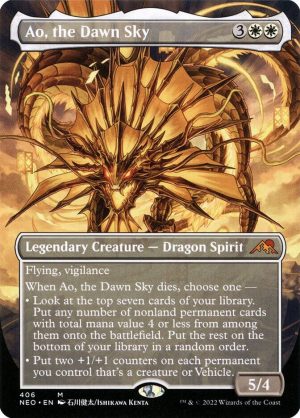
For the final game, Ben was on the play, and I was really hoping that he did not have a fast draw involving Thalia, Guardian of Thraben. I drew my opening hand, and it was Make Disappear, Fable of the Mirror-Breaker and five lands.
This was exactly the type of hand that would immediately lose to a turn two Thalia, but if Ben didn’t have one, then it would be okay, as I could counter his turn three play (Raffine, Scheming Seer or Gix, Yawgmoth Praetor), and then resolve a Fable.
Ultimately, it is not a good hand, but I decided to keep it.
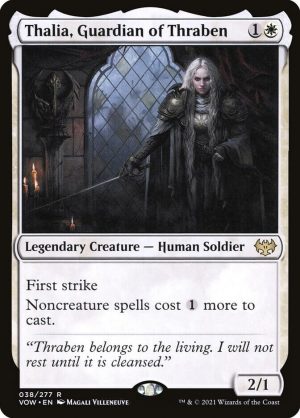
Neither of us had a turn one play, while I drew a land as my first draw. On turn two, he slammed Thalia, Guardian of Thraben, and my heart sank – it was precisely what I didn’t want to see. I felt that to have a shot here, I would have to draw a Cut Down for my second draw, but instead I drew…another land.
At this point, my hand was Make Disappear, Fable and six lands. As I played my land and passed the turn, I expected the worst, as any three-drop would basically mean game over. Therefore, I was surprised when he played his third land and attacked with Thalia. In his second main-phase, he then tried to cast a Kaito Shizuki, and someone in the crowd quickly pointed out that he couldn’t – because of Thalia.
Now, I can’t confirm the story for sure, but my understanding from what I heard after the game is that he actually had a Raffine, Scheming Seer in hand that he could have cast before attacking, but instead he opted for the post-combat Kaito line, which didn’t work because of his own Thalia.
Once the Kaito play was reversed by the judge, I think he should have still cast Raffine in the second main-phase if he had one, but he opted to pass the turn instead. At the time, this made me think he had a Spell Pierce in hand.
On my turn, I drew an Abrade, played my third land, and passed the turn. Now I felt like I was in an okay position, as I could counter whatever his next play was, or Abrade his Thalia (baiting out the possible Spell Pierce to resolve Fable) if he chooses to pass the turn again without casting anything.
On his fourth turn, he once again attacked with Thalia and then tried to resolve the Kaito, but this time I could counter it. I then untapped, played my fourth land, and resolved a Fable of the Mirror-Breaker.
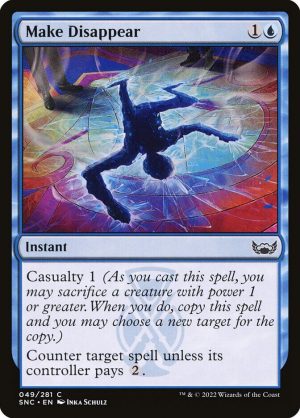
The board was now fairly even – he had a Thalia in play and I had a Goblin token and a Fable of the Mirror-Breaker. However, my hand was just lands and an Abrade, while I felt that he must have had some good cards in his. On his fifth turn, he spent a lot of time thinking, before attacking with Thalia and passing the turn without playing a fifth land.
This made me think of two things – either he was debating whether to play Raffine and try to draw a land with connive to hold up Spell Pierce through his Thalia, or he drew an Ertai Resurrected. Personally, I think if he had the Raffine, he should have just played it, but nonetheless, this was the line he took.
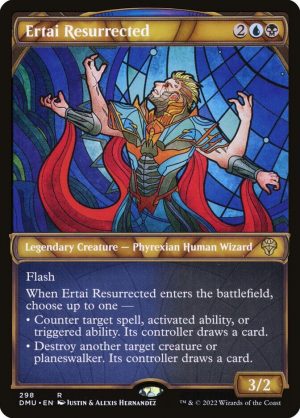
From this point forward, I don’t fully recall how the game played out, but I remember pitching two lands to the Fable and drawing into two spells. For a few turns, Ben drew for his turn, attacked with Thalia, and passed the turn. This made me guess that his hand must have had both Spell Pierce and Go for the Throat, as his deck’s curve is low enough that being stuck on four lands shouldn’t prevent him from casting most of his spells.
I also think that he shouldn’t have been attacking with Thalia, as I then got to swing back with my Goblin token and accrue treasure tokens, which helped alleviate the Thalia tax. Eventually, I was able to flip to a Reflection of Kiki-Jiki and play a Sheoldred, the Apocalypse with Make Disappear for his removal spell.
He did in fact have the Go for the Throat, which I countered, and then on his upkeep, he cast the Ertai Resurrected to kill my Sheoldred, before drawing for his turn.
At the time, I made a show of how frustrating that play was for me, but I expected it and was fine with it, as it meant he had tapped out for his turn without dealing with my Reflection of Kiki-Jiki. I then played Bloodtithe Harvester and Corpse Appraiser, and eventually overwhelmed him, as I could either kill his creatures or dig through my library every turn.
The Aftermath
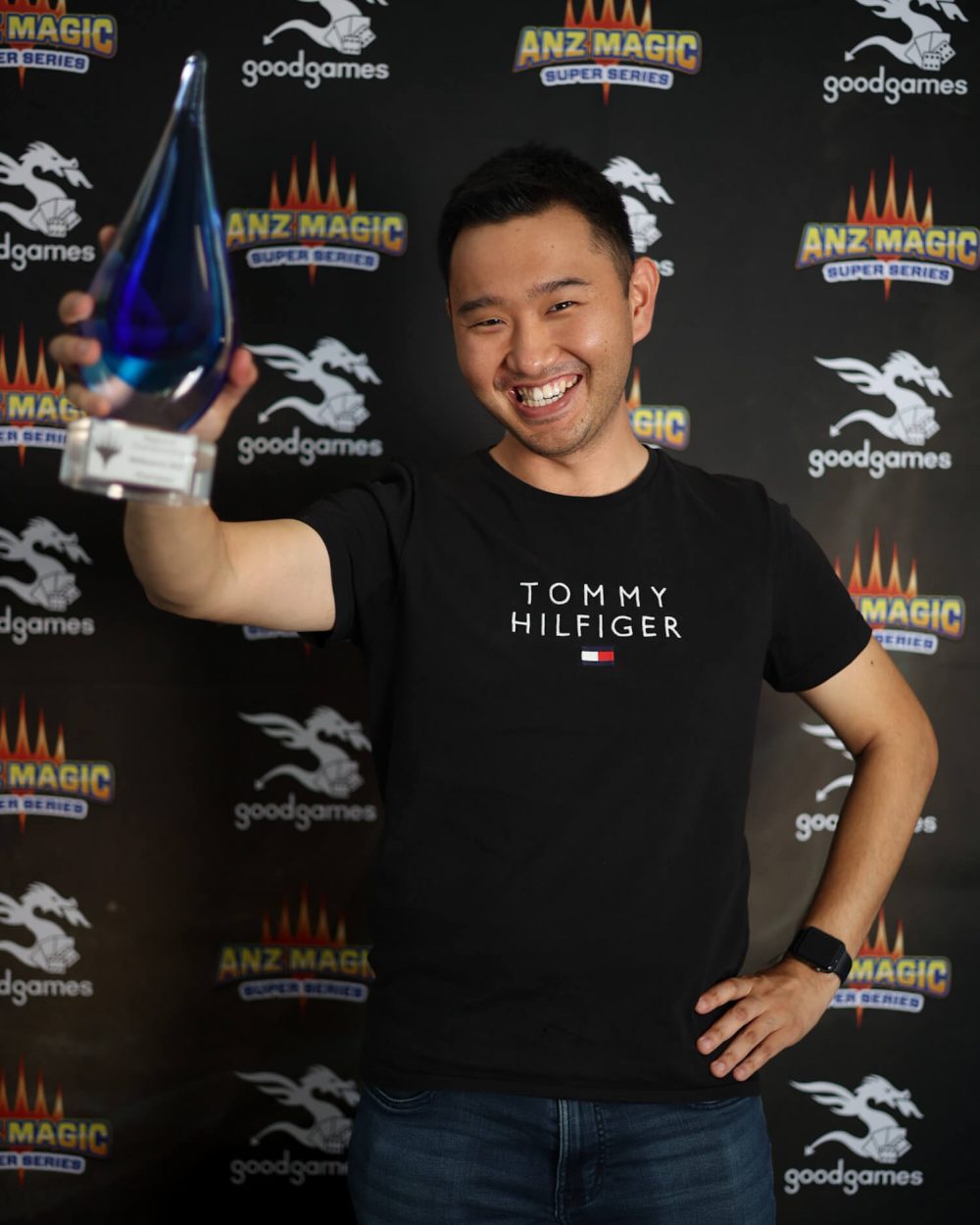
Photo Credit: ANZ MTG Super Series
Just like that, I had won the Regional Championships, and with it, I had qualified for the World Championships!
Funnily enough, though, it didn’t exactly feel that way straight after, as my friends were in the Pioneer side event and were still playing, so I shook hands with Ben and the judges and then kind of just wandered off on my own without anyone to talk to. Even while I was doing the winner’s trophy shot and interview with Riley Knight, the result still hadn’t really sunk in.
It was only until a few hours later, when messages started pouring in from family and friends, that it really hit me. People like Andrea Mengucci, Javier Dominguez and Simon Nielsen messaging me as they woke up to the news in Europe made me realize just how special it was to qualify for the World Championships.
Before I sign off, I just want to say a massive thanks to my team!
Tournaments like this are a real team effort, and once again, we completely crushed it. After qualifying two people for the Pro Tour last time around, I was hoping we could do one better, and we did exactly that by putting three people into the Top 8 here (with Nick Price also making the Top 8 of the South East Asia Regional Championships on the same weekend in the Philippines). I think that we had the best Grixis list in the room, and our results definitely proved it.
In typical post-tournament fashion, once my friends were finished with the Pioneer event, I organized a chaos team draft, which our team won 6-1. We flipped for the cards, and I walked out with all the best rares. The rich get richer, I suppose!
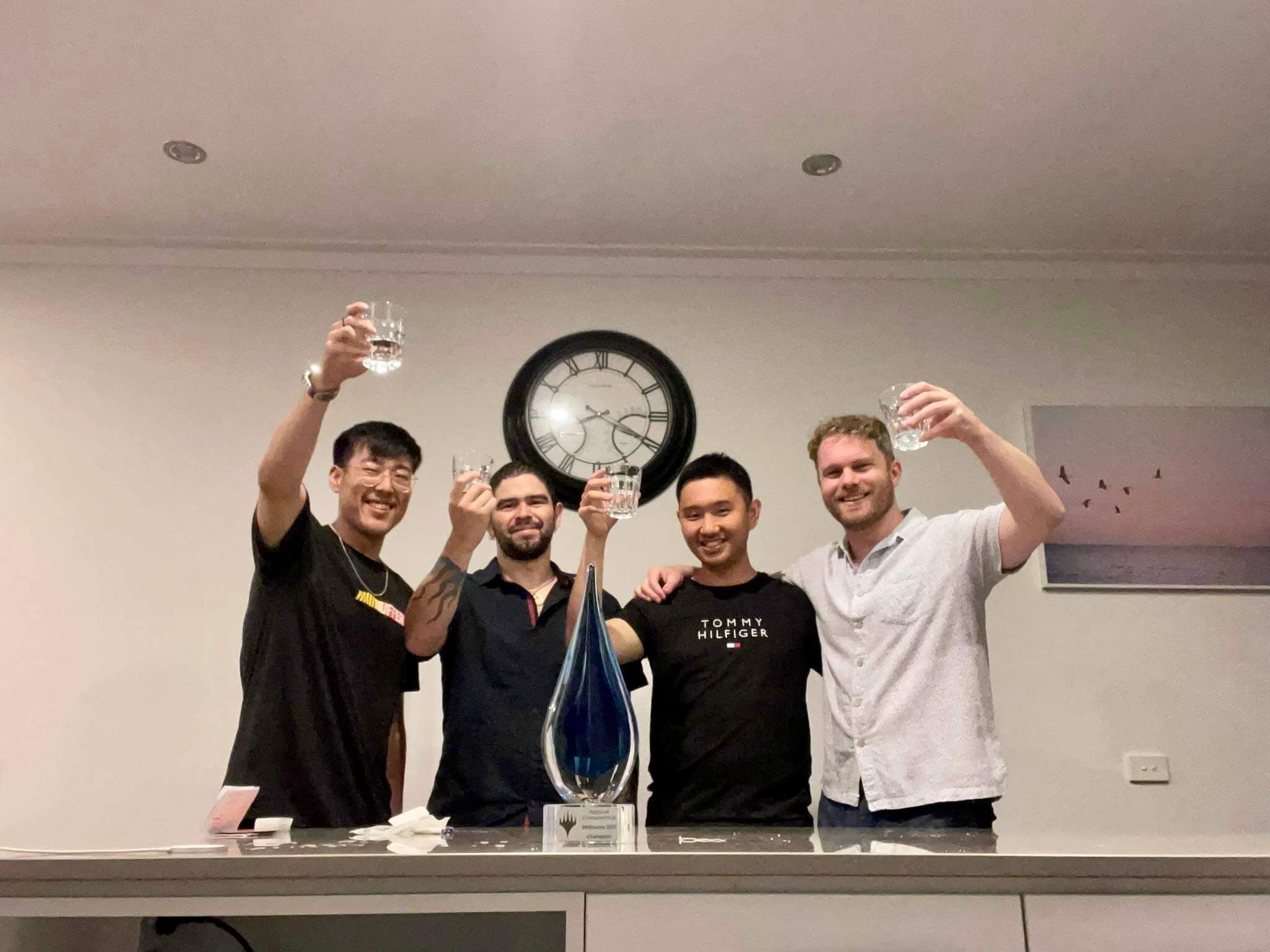
Needless to say, this tournament has now dramatically changed my plans for the rest of the year. I had just started a new job two weeks ago, and I have had to now explain to them that I’ll need at least seven weeks off this year, as I also have to go to Belgium at the end of the year for my partner’s sister’s wedding (thankfully, my work was understanding!). Although it was completely unexpected, I am really excited about the opportunity to participate in these two amazing tournaments.
I also want to thank my partner, Roisin, who has been extremely supportive and understanding all throughout both the preparation and the tournament. While I was gone for the week, she looked after our dog, Bess, and tinkered away at the garden. I came home, and it was in a significantly better state than when I had left! It’s clear who has the skills and talent in the household!
I hope you enjoyed this article as I went over my Regional Championships experience! In my next article, I will be covering in-depth the deck I played – Grixis Midrange. There are a number of major standard tournaments coming up, both in paper and online, so definitely check that out if you are planning to compete in one of these events some time soon!
Till next time!
Zen Takahashi
@mtgzen on Twitter
About the Author
Zen Takahashi is a seasoned writer and mainstay on the Three for One Trading writing team. He is an avid Eternal player from Auckland, New Zealand and enjoys competing in local Legacy events and playing Old School over webcam with friends.
Previously, he was a Silver Pro for multiple years and his results included five Grand Prix Top 8s, a 27th place at Pro Tour Amonkhet, three consecutive online Regional PTQ wins, and he co-created the Modern Dredge deck.
Nowadays though, he primarily plays Legacy, his favorite format, but he also branches out into Pioneer and Modern.

More Articles by Zen Takahashi
AUS/NZ Regional Championship Report – Top 8
Zen qualified for the Pro Tour with Bant Toxic at the Australian/New Zealand Regional Championship! Now here’s all about his tournament experience, the preparation, the team and the many, many deck choices available.
Bant Toxic Guide
Learn all about Bant Toxic in Standard with Zen: The game plan, what hands to keep, how to sequence your turns, tips and tricks, and how to approach each of the major matchups.
Mono Red in Standard
The perfect preparation for our next Store Championship! Zen gives you all the information you need to win in Standard with Mono Red Aggro. As usual he gives you a small run down of the deck together with a lot of different sideboard guides against almost every meta deck of the format.
Rakdos Midrange in Pioneer [Update]
Mistakes have been made and lessons have been learned, so it’s time for an update on Zen’s Rakdos Midrange deck in Pioneer. This time with a very detailed matchup guide on the current Pioneer Meta with sideboard options for each popular deck you’ll encounter.
World Championships 2023 Report
Zen Takahashi is back with a full report of his time during the Magic: The Gathering World Championships 2023 in Las Vegas! Learn everything about his intense preparations, his great team, his tight schedule and tasty dinners.
Rakdos Reanimator Guide [2023]
Zen Takahashi played Rakdos Reanimator at the Magic: The Gathering World Championships in Las Vegas! In his latest article, he goes in-depth about how to play the deck, what to look out for in popular matchups and explains how to make best use of The Cruelty of Gix.
The Lord of the Rings Pro Tour Report
Zen Takahashi is back with another tournament report! This time it's all about Lord of the Rings in Barcelona. In this detailed article, he goes over his draft preparations and the overall fantastic weekend with his team and friends.
Modern Living End Primer
Zen Takahashi played Living End during the Lord of the Rings Pro Tour in Barcelona. Now he's ready to share some insights on this powerful Modern deck including the card choices, what hands to keep and how to sideboard against different opponents.
Regional Championship Report – Sydney
Zen Takahashi played Mono White Humans in Pioneer during the Regional Championships in Sydney! Find out all about what deck he played, what useful tips and tricks he had up his sleeves and how it all went down in his latest article! Bonus insider info on where to get the best truffle pasta in Sydney!
Pro Tour March of the Machine Tournament Report
Zen Takahashi writes about his experience during the Pro Tour in Minneapolis! Here you can read all about what deck he played, his preparation and a full report on the Pro Tour weekend with his team.
Rakdos in Standard
Our author Zen Takahashi competed at the Pro Tour in Minneapolis, shortly before re-qualifying for another Pro Tour. Both times he played Rakdos: Reanimator and Midrange! In his latest article, he compares both experiences and goes over each of the two decks in detail.
Standard Grixis Midrange Primer
Zen won the Australasian Championship with his Standard Grixis Midrange deck a few days ago. Lucky for us, he didn't take a break and wrote an in-depth primer for the deck including sideboard tips and card choices for us! Prepare yourself for future Regional Championships or Qualifiers, because you'll be either playing this deck or playing against it.
Australasian Regional Championships Report
Zen Takahashi won the Australasian Championship and qualified for the Pro Tour and the World Championship! Now we are getting an in-depth look into how he prepared for the tournament and how the games played out in an old-fashioned tournament report.
Boros Burn in Modern
Our author Zen Takahashi is feeling nostalgic, so it was time for a break from Pioneer and time for Modern Burn, Modern Boros Burn, to be precise! As usual Zen gives you a detailed overview of the deck, nice tips and tricks on how to maneuver it around the Modern meta decks and a useful sideboarding options, based on his experience.
Rakdos Midrange in Pioneer
Zen Takahashi is not done with Pioneer yet! For the Regional Championschip in Sydney, he and his team of over 10 other players tested different decks extensively until they came up with their own twist on the popular Rakdos Midrange deck.
Mono White Humans in Pioneer
Zen Takahashi takes a closer look at his newest favorite deck in Pioneer: Mono White Humans! As usual, you can expect in-depth tips and tricks as well as a sideboard guide from Zen, who was already very successful with his Pioneer decks in his Regional Championship Qualifiers.
Best Cards in Modern – Multicolor [2022]
We asked our seasoned team of authors a tough question: What do they think are the best ten multicolored cards in Magic the Gathering's Modern format. We then went a step further and created a Top 5. Learn what they think about the very best cards of one of the game's most popular formats.
Best Cards in Modern – Lands [2022]
We asked our seasoned team of authors a tough question: What do they think are the best ten lands in Magic the Gathering's Modern format. We then went a step further and created a Top 5. Learn what they think about the very best cards of one of the game's most popular formats.
Best Cards in Modern – Artifacts [2022]
We asked our seasoned team of authors a tough question: What do they think are the best ten artifacts in Magic the Gathering's Modern format. We then went a step further and created a Top 5. Learn what they think about the very best cards of one of the game's most popular formats.
Mono Red Primer for Pioneer
This time, Zen Takahashi writes in depth about his Regional Championship Qualifier Deck: Mono Red in Pioneer! That means we get a Primer for Mono Red Burn and Mono Red Frenzy. He also doesn't spare any details about key matchups in Pioneer and helps you to play your way around them!
Mono Blue Spirits in Pioneer
Zen Takahashi can't get enough of Pioneer, which means we have another great Pioneer Primer for you: Mono Blue Spirits! Read all about mulligans, sideboarding and most importantly: How to sequence your turns.
Best Cards in Modern – White [2022]
We asked our seasoned team of authors a tough question: What do they think are the best ten white cards in Magic the Gathering's Modern format. We then went a step further and created a Top 5. Learn what they think about the very best cards of one of the game's most popular formats.
How to Build Mono Red in Pioneer
After the success of his Blue-Red Ensoul article, Zen is back with another Pioneer primer: Mono Red! In his latest work, he excessively tested Devotion, Wizard and Burn decks. You can find all his discoveries and recommendations right here:
Legacy Reanimator 2022
If you are looking for a Reanimator Primer in Legacy, look no further! In his article, Zen Takahashi gives you everything you need to know about Reanimator: Which hands to keep? What are your opponents playing? How to sideboard? All these questions and more will be answered right here.
Blue-Red Ensoul in Pioneer
After a longer break, our author Zen Takahashi is excited to get back into Pioneer and crush the first PTQ season with his version of Izzet Ensoul. You can read all about the new and old decklist as well as mulligan strategies and other tips right here!
Best Cards in Modern – Green [2022]
We asked our seasoned team of authors a tough question: What do they think are the best ten green cards in Magic the Gathering's Modern format. We then went a step further and created a Top 5. Learn what they think about the very best cards of one of the game's most popular formats.
Auckland Eternal Weekend Report
Our author, Zen Takahashi, spent an Eternal Weekend in Auckland where he played tournaments of Vintage, Old School and Legacy. Real Power Nine, no proxies allowed! You can read all about what decks he played and how it went right here on our blog!
Best Cards in Modern – Red [2022]
We asked our seasoned team of authors a tough question: What do they think are the best ten red cards in Magic the Gathering's Modern format. We then went a step further and created a Top 5. Learn what they think about the very best cards of one of the game's most popular formats.
Top Ten Decks in Legacy 2022
In our latest article, Zen Takahashi analyses the best Legacy decks and comes up with his Top 10 Legacy decks of 2022. If you are curious to find out if your deck made the cut, or simply interested in what's going on in Legacy these days, keep on reading right here!
Best Cards in Modern – Black [2022]
We asked our seasoned team of authors a tough question: What do they think are the best ten black cards in Magic the Gathering's Modern format. We then went a step further and created a top 5. Learn what they think about the very best cards of one of the game's most popular formats.
Rainbow Dredge in Modern
Today’s article is all about Dredge in Magic: The Gathering, more specifically, Dredge in Modern. Zen Takahashi, one of the creators of Rainbow Dredge, took a look at the history of the deck and its current state in the meta. He’s also going over different iterations of the deck, as well as all the current sideboard options available.
Best Cards in Modern – Blue [2022]
We asked our seasoned team of authors a tough question: What do they think are the best ten blue cards in Magic the Gathering's Modern format. We then went a step further and created a top 5. Learn what they think about the very best cards of one of the game's most popular formats.
Blue Zenith in Legacy
Zen takes a look at a new deck that did surprisingly well in recent Legacy online events. Green Sun's Zenith and blue Counterspells are the engine in this midrange powerhouse.
Deck Spotlight Modern: Golgari Yawgmoth
Zen takes us to a wonderful world full of creatures, combos and one ofs in the Magic the Gathering Modern format. Chord of Calling is the name of the game. Let's go!
Deck Spotlight Legacy: UW Omni-Tell
Zen talks about one of his favorite decks for paper Legacy: Blue-White Show and Tell Omniscience combo. The best thing about it: It does not need a single card from the restriced list!
Bant Miracles in Post-Modern Horizons 2 Legacy
Zen Takahashi shares his thoughts about his favorite Legacy Deck – Bant Miracles in a Post-Modern Horizons 2 world. He explains which cards he added from the new set and how matchups have changed.
